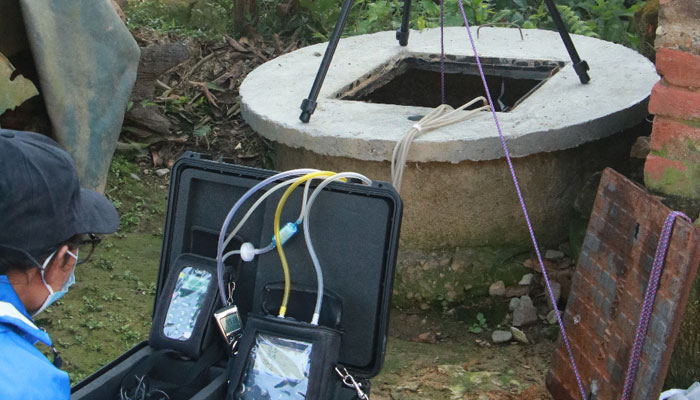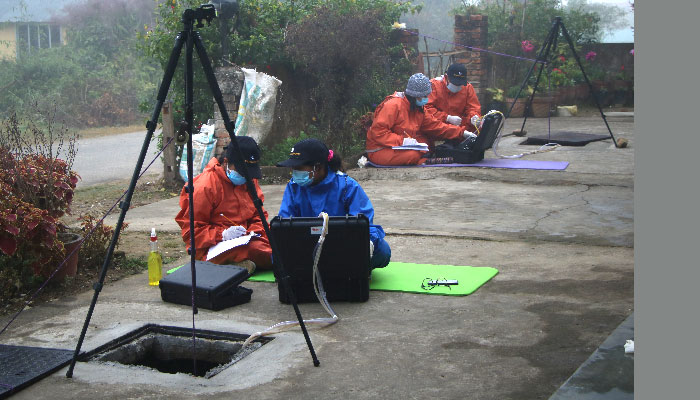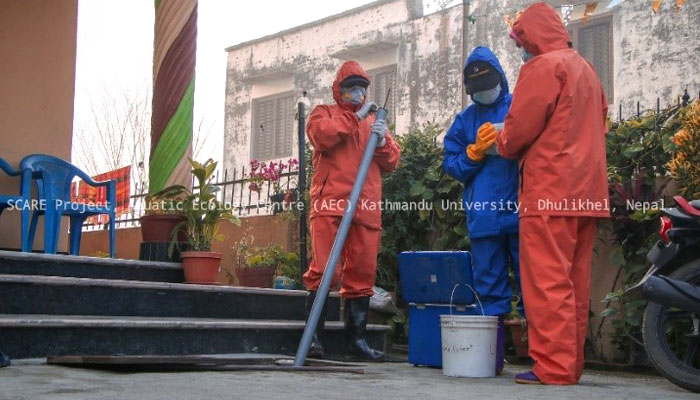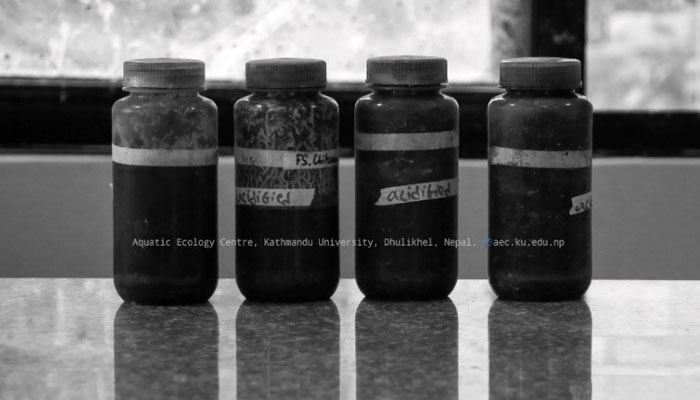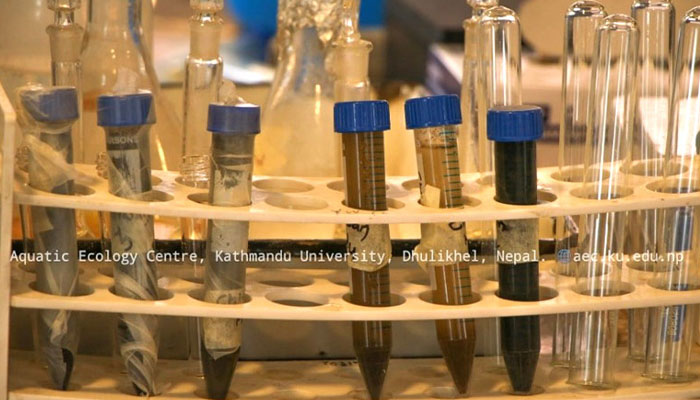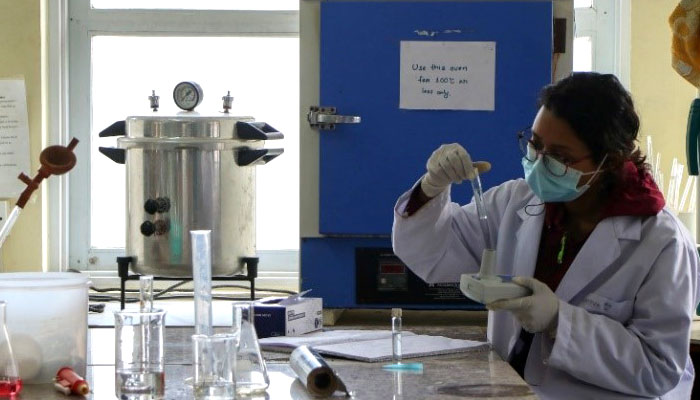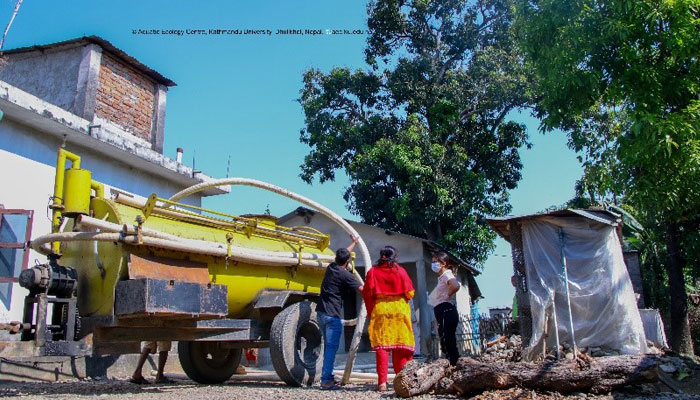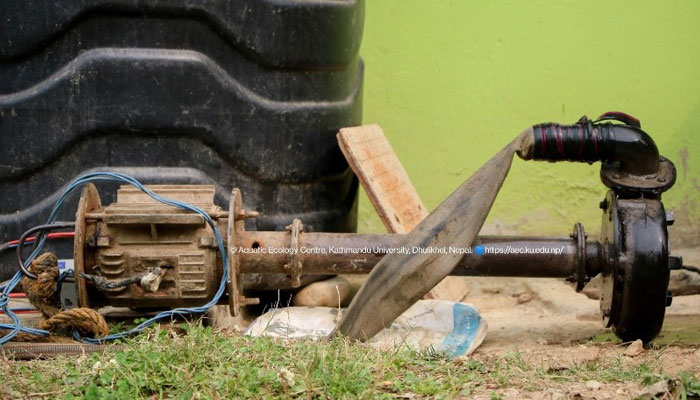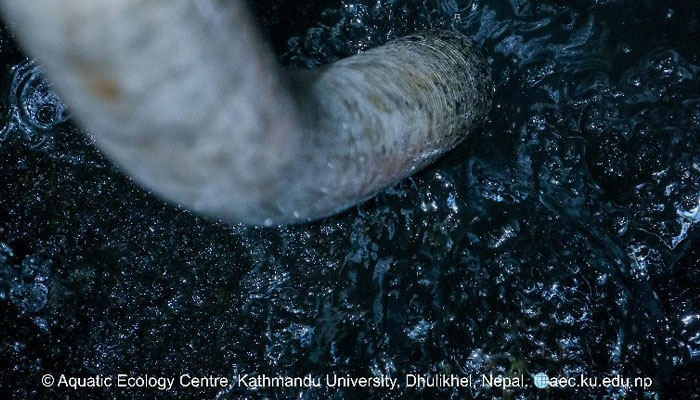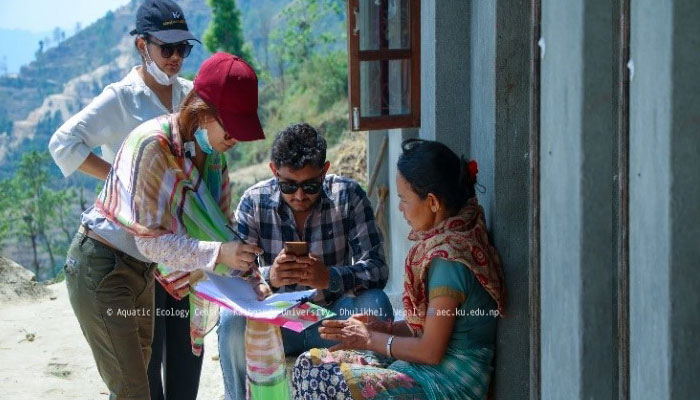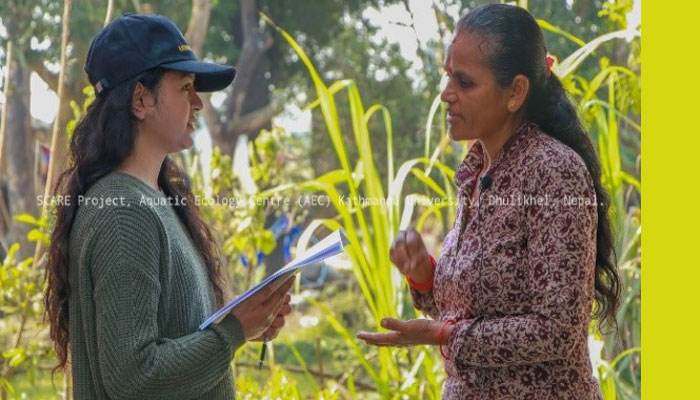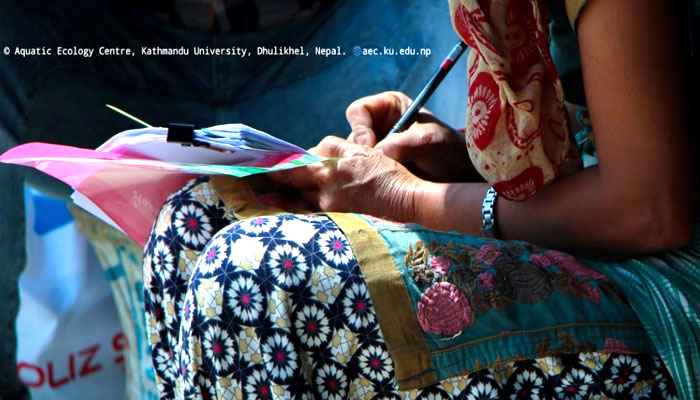Nepal
Sanitation and Climate: Assessing Resilience and Emissions (SCARE) in Nepal
Greenhouse gas measurement
The study was conducted within a selection of 30 containments consisting of a diverse set of 18 Pit latrines, 9 Holding tanks, and 3 Septic tanks. The selection was distributed across different local divisions, Dhulikhel, Bhethanchowk, and Ratnanagar with varying geographical structures.
(Fig 1-3)
Greenhouse Gases were analyzed using a set of modified static flux chambers connected to the gas analyzers, GA5000 (CH4, CO2) and G200 (N2O). Samples were collected for four distinct seasons: Winter, Spring, Summer, and Autumn. The chamber was also connected to a pressure gauge which gave the reading for the
pressure of gas flowing through the pipeline. An i-button was also fixed inside the chamber to record the ambient temperature of the containment during the time of measurement (Fig 1-3).
(Fig 4-5) (Fig 6-9)
Besides, gas samples the faecal sludge samples were collected using the core sampler fabricated at the university (Fig 4-5). The collected sludge from the field was transported to Aquatic Ecology Centre, Kathmandu University. Chemical parameters such as Total Solid, Volatile Solids, Chemical Oxygen Demand, Kjeldahl Nitrogen, Ammonia were analyzed in the laboratory(Fig 6-9). Analysis of pH, temperature, Electrical, Conductivity, Total Dissolved Solid, and Oxidation-reduction Potential were measured on-site.
(Fig 10-12)
SCARE project extension work includes the monitoring of emissions with the change in the temporal increase in the sludge height. For this 8 containments were emptied and are being monitored (Fig 10-12).
Resilience assessment
For the assessment of resilience, 14 communities from 13 different municipalities was selected. Both quantitative and qualitative data were collected. The household survey was conducted using KoboCollect, an open-source Android app for collecting data. Students and graduates of KU were trained for the survey. The training introduced the enumerators to a basic understanding of the technical terms of sanitation, the use of KoboCollect, and conducting the household survey.
(Fig 13-16)
For the qualitative survey, the Key informant interview (KIIs) and Focus Group Discussions (FGDs) were recorded on mobile phones. The participants were asked for consent before the household survey, KIIs, or FGDs. A total of 42 qualitative surveys were conducted with various stakeholders within the sanitation value chain (Fig 13- 16).



